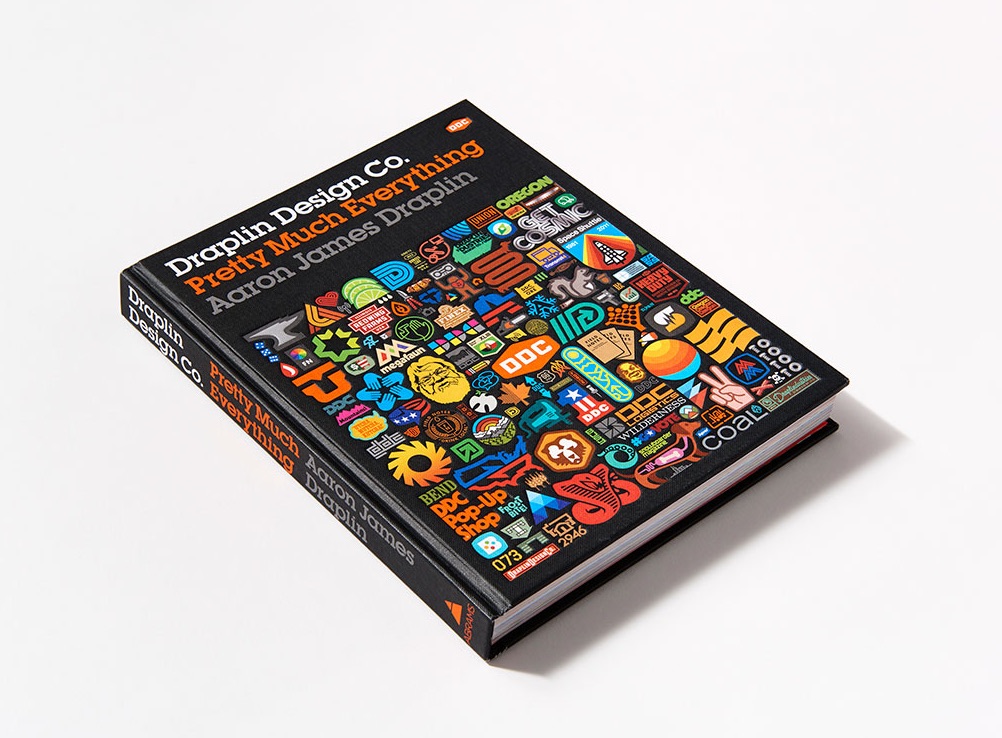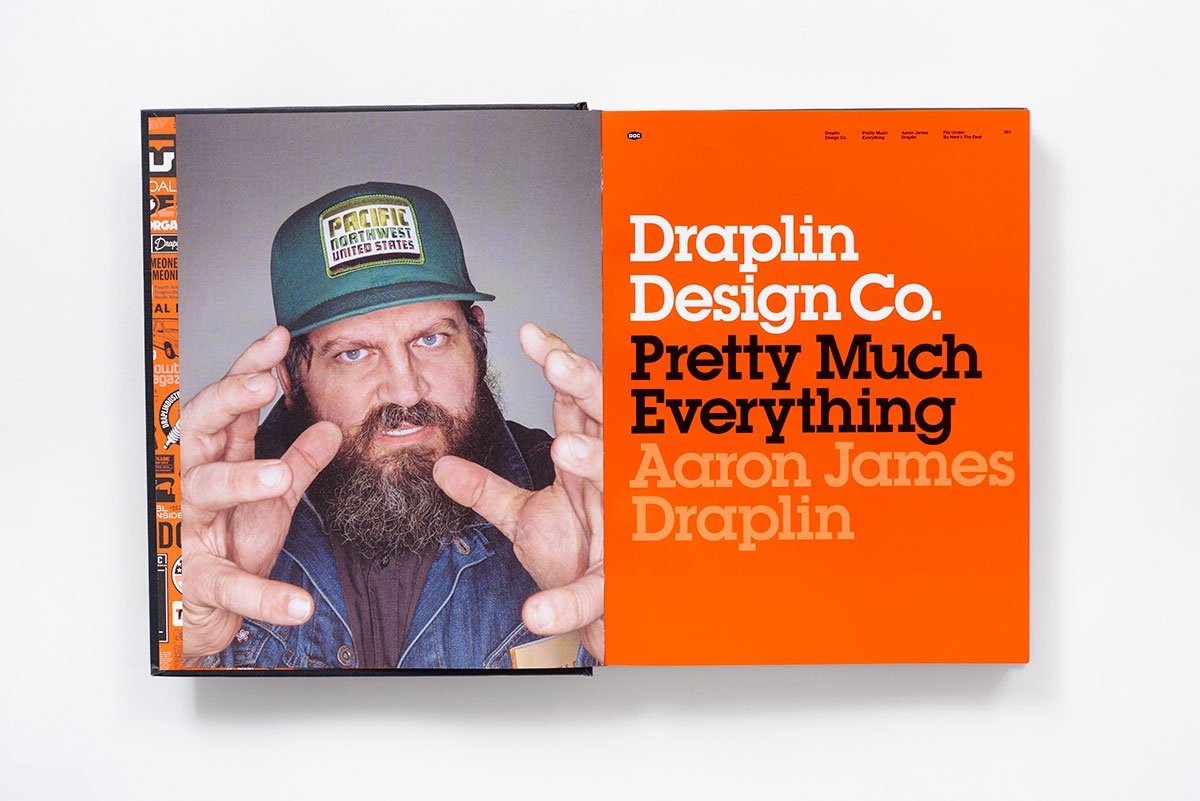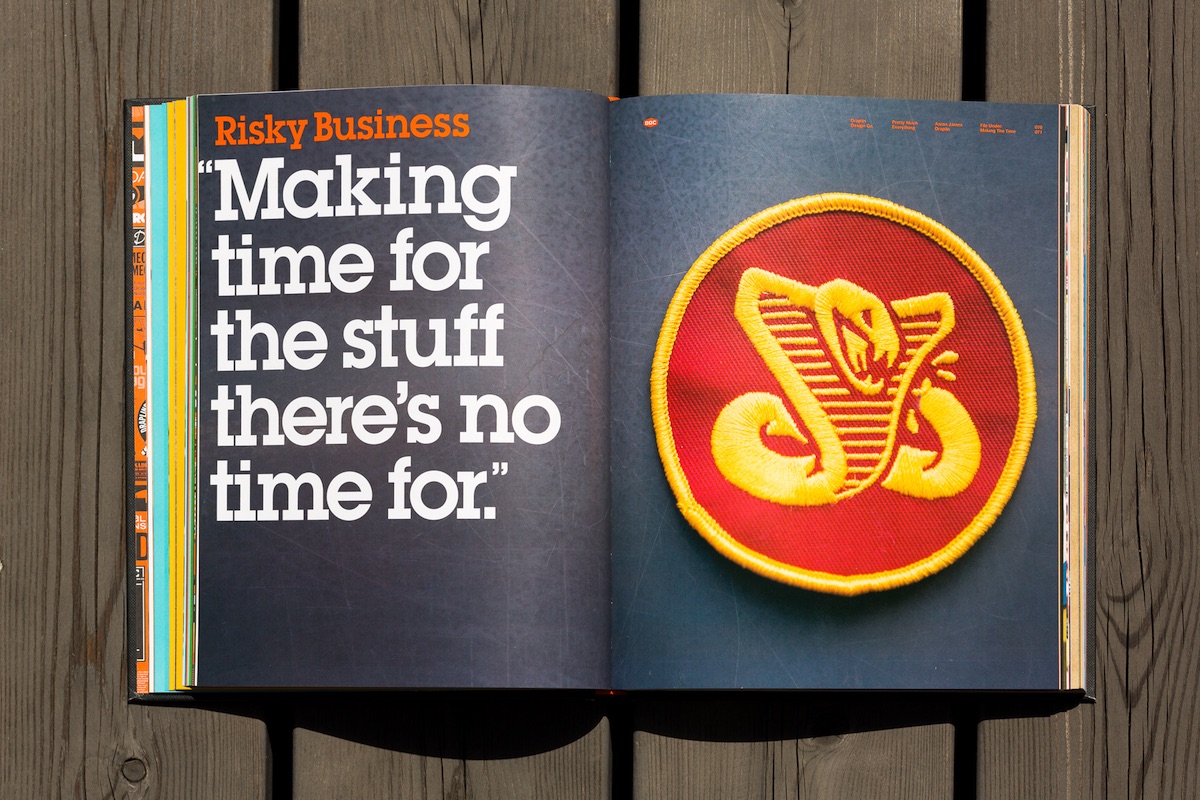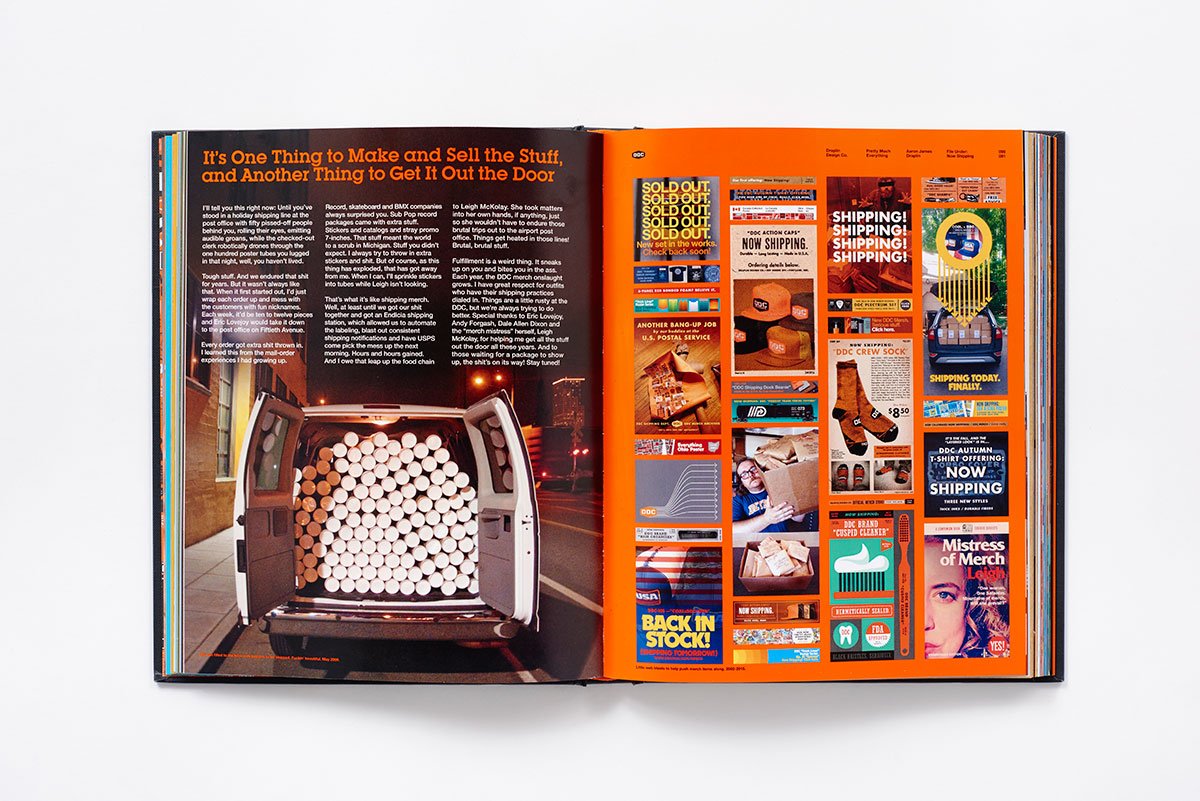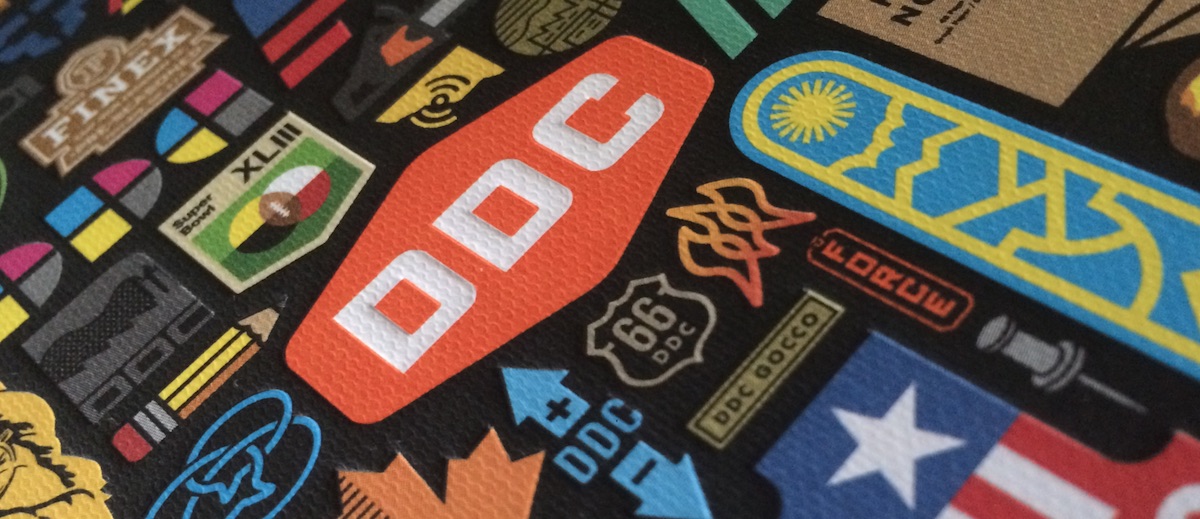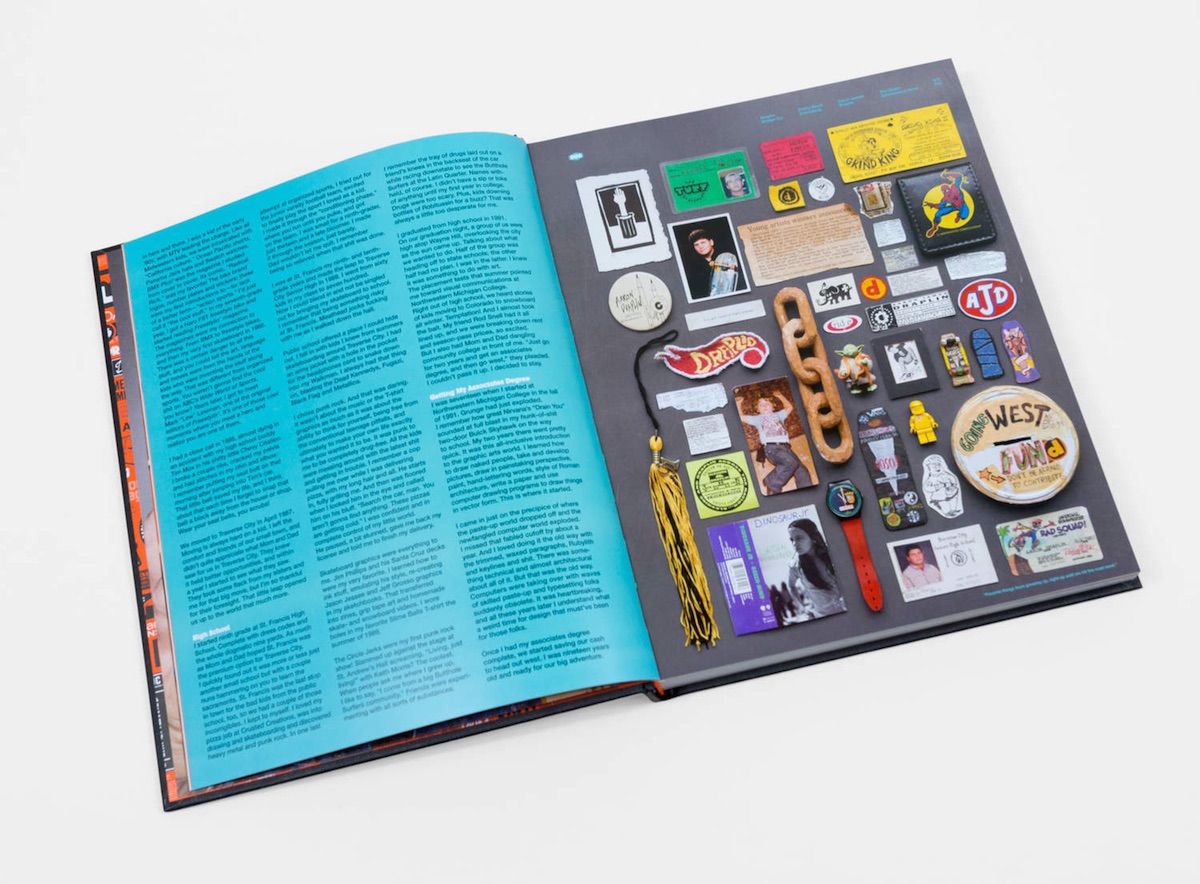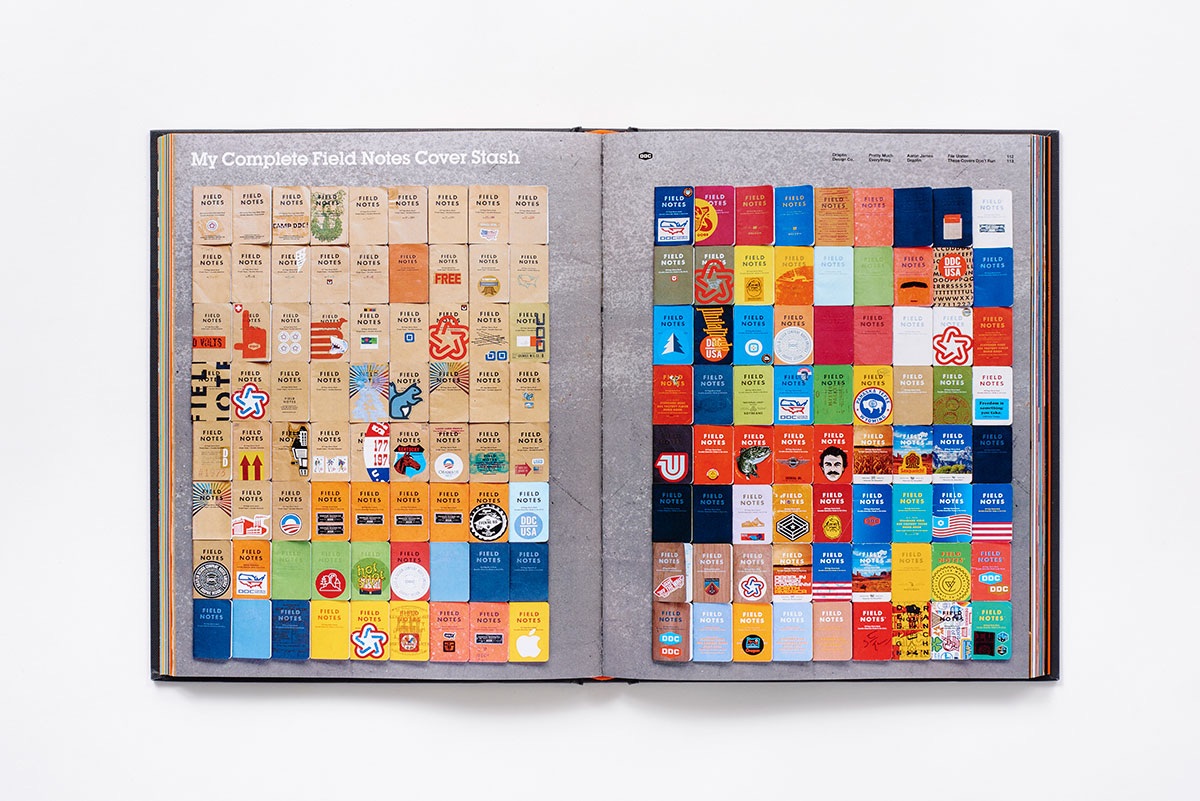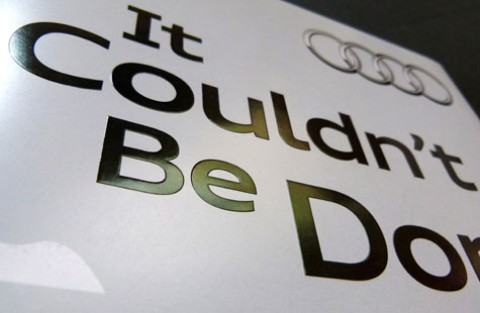At the recent Adobe MAX event, our first indication that designer Aaron Draplin was in the room wasn’t his trademark cap or beard, but the enormous swell of people gathered around him. Anyone wanting to understand his popularity need look no further than “Draplin Design Co.: Pretty Much Everything,” less a book about design than a model for living creatively. “I tried to build a life in design my own way,” he tells us on the first page before asking, “Can you make a career out of something on you own terms? I think you can.” He did.
To page through “Pretty Much Everything” is to become instantly and acutely aware of just what capital-D Design has become today: lifeless, antiseptic and practiced, as nearly everything else is now, completely for the paycheck. Draplin never comes right out and says this about other designers; he’s not that kind of guy. Instead, he makes us see this for ourselves by focusing on his own motivations and accomplishments. In the process, we discover that the reason his logos, poster designs and host of other works pulsate with life is because, again and again, he’s eschewed the high-paying corporate gigs for projects that excited him creatively. He loves what he does.
One of the most amazing aspects of this book is just how complete it feels when it comes to cataloging the prolific output of a man we have to remind ourselves is only in his early 40s. From some of his first childhood sketches and design projects right on through his entire career to date, we see his style and interests evolve, glimpsing some of the vintage items that inspired him along the way. And because looking at page after page of straight design can get tedious after a while, we’re also treated to photographs of everything from his record collection and doodled-in notebooks to snapshots from the early days of Field Notes, which he co-founded.
Finally, Draplin’s deep passion for design shows in the production of the book itself, nowhere more so than the front and back covers, which feature dozens of debossed logos of his making. Much more about the making of the book can be gleaned from pages at the back that not only tell you what technology was used from writing to publication, but also what he was (or was not) wearing.
Perhaps the most important information in the entire volume resides here, too, in the form of a message:
“What I Hope this Book Accomplishes: I hope a kid who reads it will be inspired to look at a life in design in a little bit different way than the schlock that’s fed to us. You don’t have to hate your job. You don’t have to accept working for clients who push you around. You can build your own life.”
How many of us have been waiting our entire careers for someone to tell us that?
PRO members, don’t forget to:
(Not a member? Why not start your PRO membership today?)
Love this piece? Like it, share it and add your comments below.

